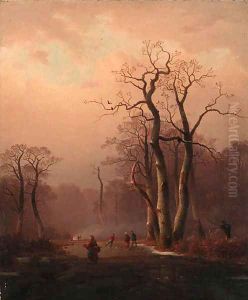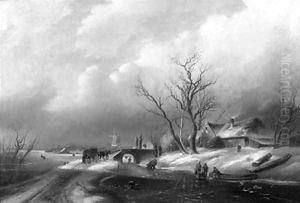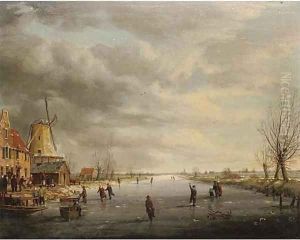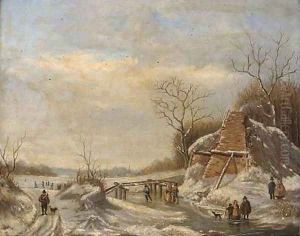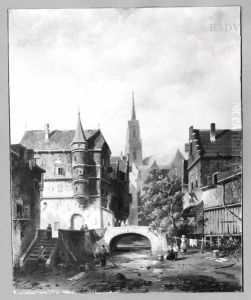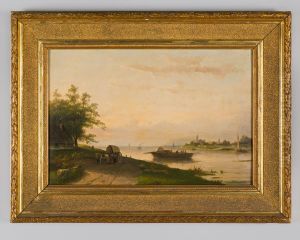Charles Leickert Paintings
Charles Leickert was a prominent Belgian-born Dutch painter whose career flourished during the 19th century, a period marked by the Romantic movement that influenced many aspects of art, literature, and music across Europe. Born on September 22, 1816, in Brussels, Belgium, Leickert's early life set the stage for his eventual emergence as a notable figure in the Dutch romantic landscape painting tradition. Despite the lack of detailed records about his early education, it is known that Leickert moved to the Netherlands during his childhood, where he would spend the majority of his life and career.
Leickert's artistic journey began under the guidance of various masters, most notably Bartholomeus Johannes van Hove, who was instrumental in teaching him the intricacies of landscape painting. Under van Hove's tutelage, Leickert learned not only the technical skills required for his craft but also developed a keen sense of atmospheric and light effects, which would become hallmarks of his work. He also studied with Wijnand Nuyen, a romantic painter whose influence is evident in Leickert's early works, and later with Andreas Schelfhout, a leading landscape painter of the time. Schelfhout's influence on Leickert was profound, shaping his approach to landscape painting and helping him to develop his distinctive style.
Throughout his career, Charles Leickert specialized in painting Dutch landscapes, cityscapes, and winter scenes, often imbued with a romantic sensibility that captured the beauty and tranquility of the Netherlands. His works are characterized by meticulous attention to detail, vibrant use of color, and the ability to depict light in a way that brings his scenes to life. Leickert's landscapes often featured waterways, windmills, and figures going about their daily lives, showcasing not only the natural beauty of the Dutch countryside but also providing insight into the rural life of the period.
Leickert's reputation grew steadily throughout his career, and his works were highly sought after by collectors and art enthusiasts. Despite this, he never achieved the same level of fame as some of his contemporaries. In the latter part of his life, Leickert moved to Mainz, Germany, where he continued to paint until his death on December 5, 1907. Today, Charles Leickert's paintings are recognized for their contribution to the Dutch Romantic movement and are held in high regard by art historians and collectors alike. His works can be found in many prestigious museums and private collections around the world, serving as enduring testaments to his skill and vision as a landscape painter.
